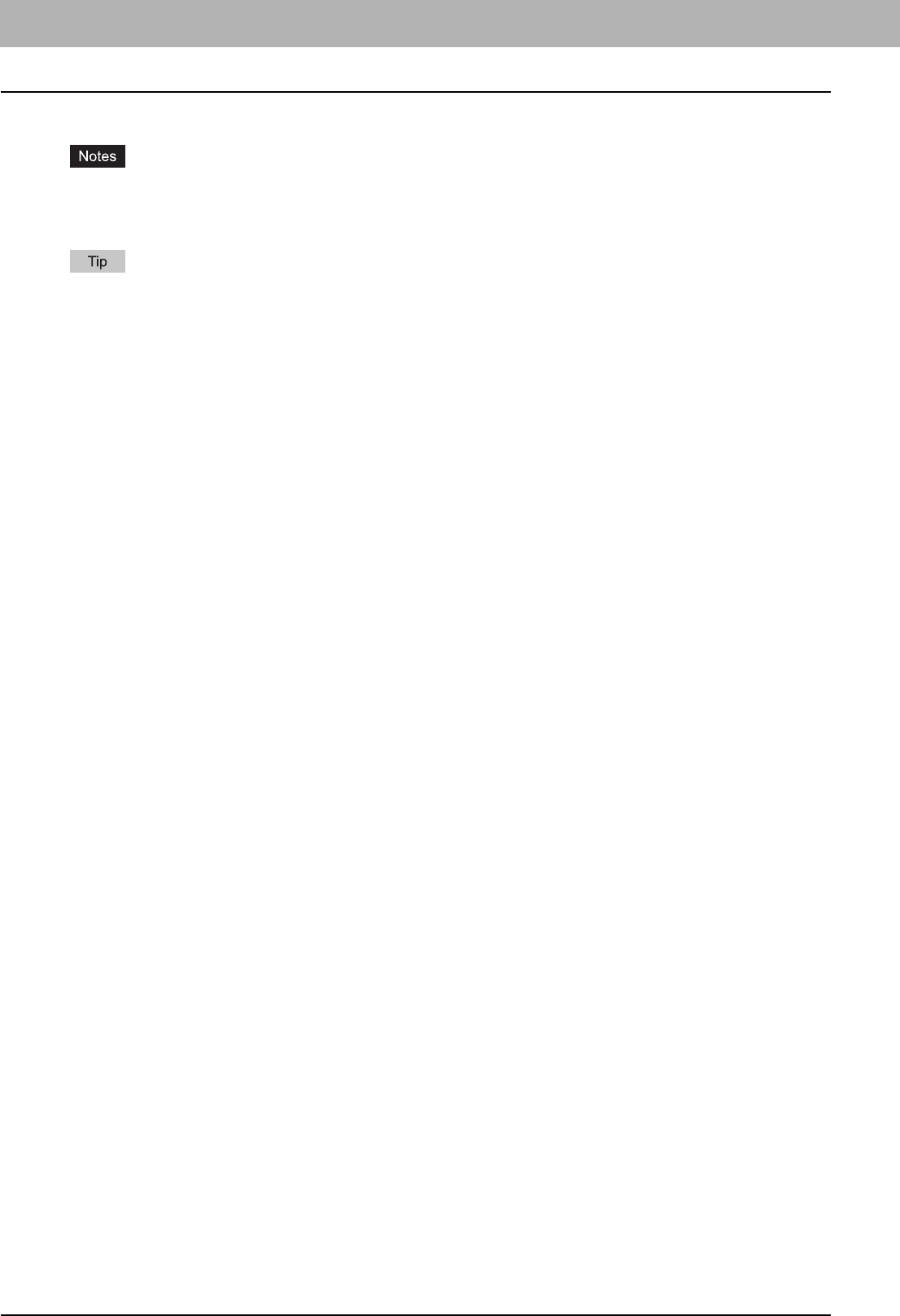
4 PRINTING FROM UNIX
124 Printing from an Application
Printing from an Application
This section describes how to print from a UNIX workstation.
y When the User Management Setting is enabled on the equipment, the print jobs that are sent from UNIX
workstations are processed as invalid jobs according to the Department Code Enforcement setting.
y Before attempting to print from a UNIX workstation, make sure all the UNIX Filters are installed in your workstation.
For instructions on how to install or set CUPS, refer to the Software Installation Guide.
Considerations and Limitations
y This equipment acts only as a filter and not as a complete driver. The size and order of the printed pages cannot be
modified.
y The UNIX filters do not support the following engine-supplied features:
- Enlarge/Reduce printing
- Rotate Sort
- N-up printing
- Watermarks
- Cover Sheets
- Sheet Insertion
- Scheduled Print
- Print to Overlay File
- Store to e-Filing
- Use Overlay Image
y Linux uses the lptap command to send a file to this equipment.
Since lp is not supported in all versions of Linux, the lptap command should be used instead.
y AIX supports printing using the qdaemon. This can be invoked by the user with the commands lp, lpr or qprt. In order
to use the filter, either lp or qprt should be used.
Printing Using LP Command
Use the lp command (lptap in Linux) to send a file to this equipment for printing. This command specifies various printer-
specific options using the -o option parameter on the command line. The lp command also sets other print options using
various other parameters. Use the man estcolor.1 command to display the online document that describes the various
options and parameters that can be set to configure printed output.
All the options are sent to this equipment at the start of a print job so, if the print file contains its own commands, they may
override the lp options.
Generic “lp” and “lptap” Options
How to print files
Enter the following “Ip” command to print files with the specified printer:
"lp -d <queuename> <filename>"
Copies
The number of copies of a print job is specified using the “-n <value>” parameter with the “lp” command. The default value
is determined by the “lp” command and it is always 1. The copies are always collated.
Title
The title that is printed on the banner page can be specified using the “-t <title>” parameter with the “lp” command. The
default value is determined by the “lp” command and it is often the name of the print file. If multiple files are printed using
the same “lp” command the default title is set to the name of the first file by the “lp” command.


















